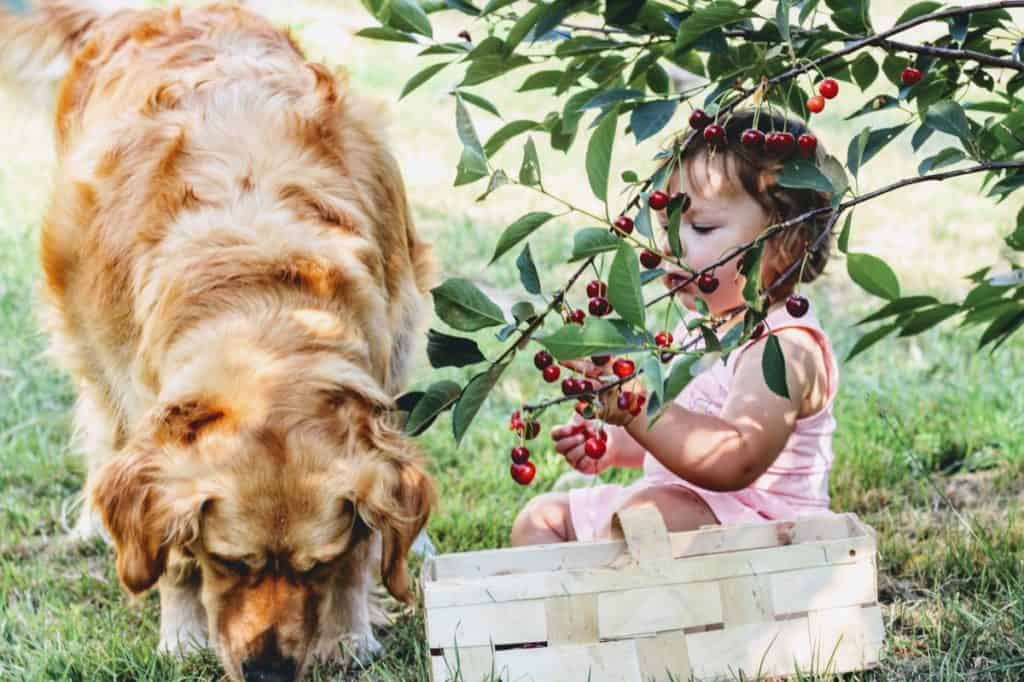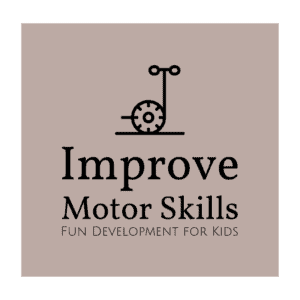Whatever your toddler does, they will learn new movements and improve their motor skills every day. The same goes for eating. As soon as babies start grabbing for that puree or for those steamed veggies, their small hands start working in specific ways to bring food into their mouths, while learning new movement patterns as they go.

The problem many parents are facing is that it’s sometimes easier to feed the child yourself than to let them use the spoon to feed themselves. When we started to introduce the spoon to our daughter at an age of 6 months, it was a mess at first. A horrible-horrible mess. Most of the food never reached her mouth and it was a headache to clean after her after each mealtime. But it took a few weeks of reminding ourselves that she needs to learn those skills and we are really happy with the result.
Every kid learns the skills they need at a different time, so I’m not saying you should also start introducing spoons at this age. But whenever your child shows the first signs that they are ready for it, just let them learn how to eat by themselves, and don’t intervene too much.
The goal of this article is actually to introduce some additional ideas how to improve fine motor skills with foods and luckily there are some foods that are perfect for that.
Below are some ideas you might want to try with your toddler. All of them will give a nice boost to various fine motor skills, including bilateral coordination (the ability to move both sides of your body in a coordinated way), pincer grasp (the coordination of the index finger and the thumb to grab items), finger strength, etc.
Foods to Improve Fine Motor Skills of Your Toddler
Picking Apples
If you have access to an apple tree, take your kid there. Lift them up and let them choose the apple they like. Grabbing that apple and trying to break it off the tree can require serious strength, so let them work on it.
Do keep a close eye on your kid if they want to actually eat the apple because most apples tend to be too hard for younger children and can be a choking hazard. Some parents recommend that you should steam apple slices before giving them to kids under 4 years old. Our daughter has been eating apples raw since she was one and has not had any issues. But we never leave her alone when she’s munching on one.
Peeling a Banana
A younger toddler will probably not be able to start peeling a banana without your help. Help them by opening up one side just a tiny bit and then give them a chance to finish by themselves. If they are discontented and hasty, talk to them and let them know that the peel has to be taken off before they can start eating the banana. NB! Always thoroughly wash the fruit before giving it to your kid.
Peeling a Tangerine
It will be difficult for a toddler to start peeling a tangerine as their fingers might not be ready to make the initial opening into the peel. They might use teeth to get started, but if they need a hand, help them out at first. NB! Always thoroughly wash the fruit before giving it to your kid.
Picking Grapes and Berries
If you have a garden with some grapes or berries, you’re in luck. Take your little one there and let them pick the berries from the tree/bush. If you have grapes or black or red currants, kids will most likely grab a whole bunch, so they’ll also need to pick the individual berries from the vines. It’s great for their bilateral coordination and pinching strength as they need both hands to get the individual berries.
Peeling an Egg
Peeling a hardboiled egg needs more advanced fine motor skills as the shell is so thin and small pieces might not want to come off easily. Talk to your kids and tell them that all of the shell must be removed before they can start eating. Make sure to verify that all of the pieces of the shell are removed before they start eating the egg – this can be quite tricky if you have a little egg-lover on your hands like we do 😉
Peeling String Cheese
Show your child how to peel string cheese and try to motivate them to make the strings as thin as possible. As there is no physical barrier with cheese (as is with bananas or tangerines), they may not be so interested in peeling off strings of cheese when they arevery hungry, and will instead want to just munch away. Our daughter usually devours the first stick and starts peeling once she gets a second one.
Pick Green Peas from the Pods
Peas are also really good foods to practice fine motor skills. First of all, kids need to open the pods, and then pick the individual peas from it. If they are not able to open up the pod, give them a hand with that. As with most of the suggested foods, eating peas really helps to improve your toddler’s bilateral coordination. But once again, they can be a choking hazard so keep a close eye on your kid.
Removing Pits from Cherries
Take caution here as well as the pits can be dangerous for your toddler. But with supervision, it’s a great and useful activity. The leftover cherry pits, if cleaned and dried, can be used in various sorting activities.
Splitting and Picking up Spaghetti
Before cooking pasta, give a bunch of spaghetti to your kid and allow them to snap the pieces in half. Let them try individual spaghetti sticks and then multiple at once. It’s not gonna be a perfect pasta with snapped spaghetti but it’s gonna be so much fun (and also useful) for your little one 🙂
Once the pasta is served, allow your toddler to eat it with hands (even if they already know how to use a fork). Picking up the individual strings of pasta is not that easy, but encourage them to try and not grab a bunch.
Another great activity with raw spaghetti is giving your toddler a pasta strainer, placing it upside down and getting them to stick individual spaghetti in the holes to make a ‘hedgehog’. This is a favorite at our home and usually keeps our daughter busy for at least 15-20 minutes – perfect when you really want to enjoy that cup of coffee in peace 😉
Squeezing Juice from Oranges
Tell you kid that you are going to make orange juice today. Now give them half an orange and a bowl, and do the same for yourself. And then just start squeezing. It will be fun for the kid, and, as they will probably not be able to get all the juice from the orange, the leftovers will be tasty as well. While the amount of juice they’ll get is not that much, the benefits to their finger strength will compensate that (in the long run 🙂 )
Sorting Beans, Peas, Almonds, Berries, etc.
Find some small bowls and then get some berries, peanuts, small veggies (e.g. beans or slices of carrots), or whatever foods you have at home. Mix them in a bowl and then show your kid how to sort them into separate bowls. If your kid is too young to sort the foods perfectly, no worries. Already picking them up one by one and placing them into the bowls of their choice covers 99% of the goal of this exercise.
I’d suggest you use foods that your kid can also eat while they play 🙂
Grabbing Green Peas from a Bowl of Water
Put some fresh green peas in a bowl and fill the bowl with water. Then give it to your toddler so they could pick the peas out of the water. Picking the peas out of the water is very different from picking them out of a bowl or off a hard surface and will improve your toddler’s hand-eye coordination and the general perception of the world.
Playing with Pizza or Cookie Dough
NB! Playing with dough is not recommended by various institutions as raw eggs and unbaked flour can contain bacteria that can be dangerous.
If you still decide to give your kid a piece of dough, make sure they won’t put their hands in their mouth, and wash the hands thoroughly after the play. Or better yet, use play dough. Both of them have really good benefits for your kid:
- Pressing and pinching movements will improve finger strength.
- Pulling movements will improve strength in fingers and arms.
- Pounding and squashing movements improve bilateral coordination.
- Rolling movements will improve coordination.
